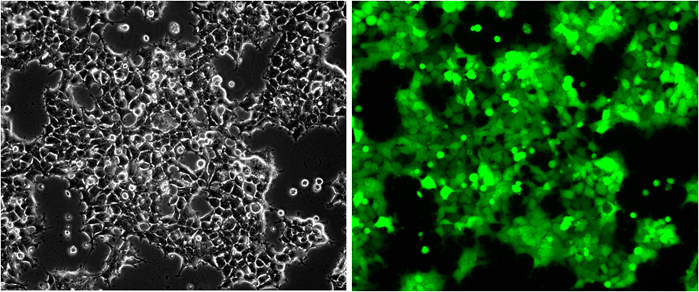Recombinant Canis lupus familiaris ANXA2 Protein, His Tag
Shipping Info:
For estimated delivery dates, please contact us at [email protected]
| Amount : | 50 µg |
| Content : | Lyophilized from sterile PBS, pH 7.4. Normally 5 % - 8% trehalose is added as protectants before lyophilization. |
| Storage condition : | Store at -20°C to -80°C for 12 months in lyophilized form. After reconstitution, if not intended for use within a month, aliquot and store at -80°C (Avoid repeated freezing and thawing). Lyophilized proteins are shipped at ambient temperature. |
| Uniprot ID : | Q6TEQ7 |
| Alternative Name : | Annexin A2, Annexin-2 |
Molecular Characterization: ANXA2(Ser2-Asp339) 6×His tag
Molecular weight: The protein has a predicted molecular mass of 39.3 kDa after removal of the signal peptide. The apparent molecular mass of dANXA2-His is approximately 35-55 kDa due to glycosylation.
Description: Recombinant canis ANXA2 protein with C-terminal 6×His tag
This gene encodes a member of the annexin family. Members of this calcium-dependent phospholipid-binding protein family play a role in the regulation of cellular growth and in signal transduction pathways. This protein functions as an autocrine factor which heightens osteoclast formation and bone resorption. This gene has three pseudogenes located on chromosomes 4, 9 and 10, respectively. Multiple alternatively spliced transcript variants encoding different isoforms have been found for this gene. Annexin A2 expression has been found to correlate with resistance to treatment against various cancer forms.
Molecular weight: The protein has a predicted molecular mass of 39.3 kDa after removal of the signal peptide. The apparent molecular mass of dANXA2-His is approximately 35-55 kDa due to glycosylation.
Description: Recombinant canis ANXA2 protein with C-terminal 6×His tag
This gene encodes a member of the annexin family. Members of this calcium-dependent phospholipid-binding protein family play a role in the regulation of cellular growth and in signal transduction pathways. This protein functions as an autocrine factor which heightens osteoclast formation and bone resorption. This gene has three pseudogenes located on chromosomes 4, 9 and 10, respectively. Multiple alternatively spliced transcript variants encoding different isoforms have been found for this gene. Annexin A2 expression has been found to correlate with resistance to treatment against various cancer forms.
|
There are currently no product reviews
|

















.png)









